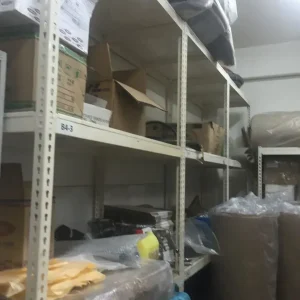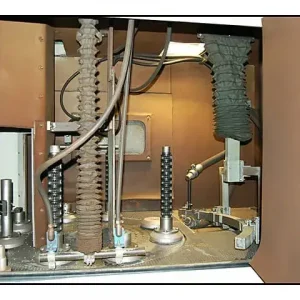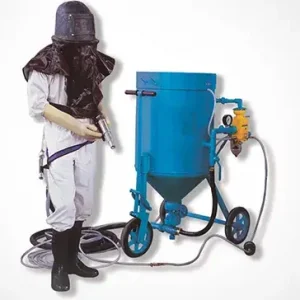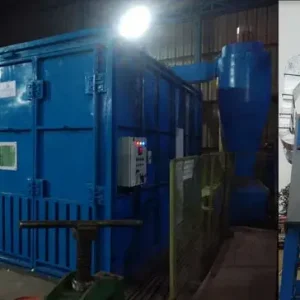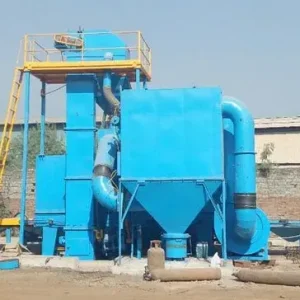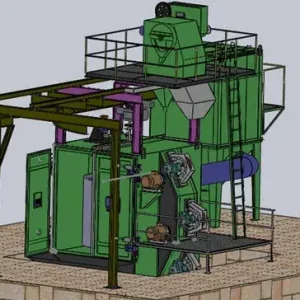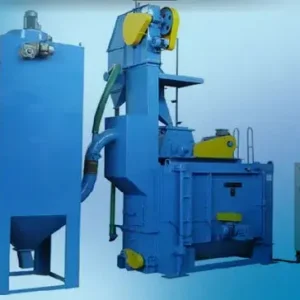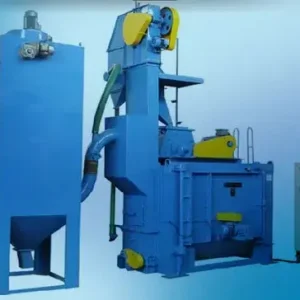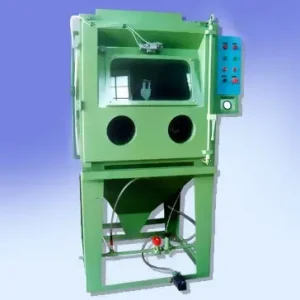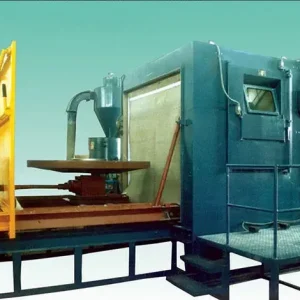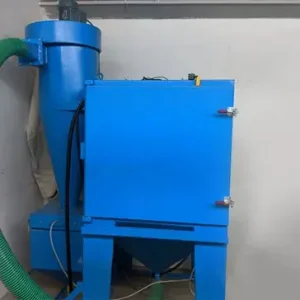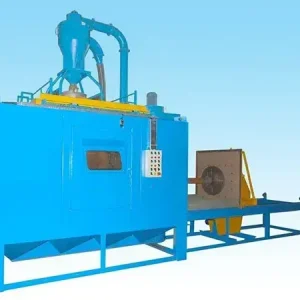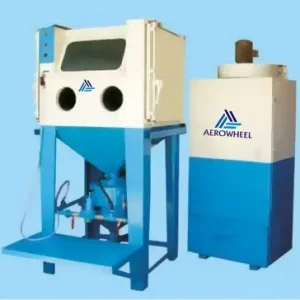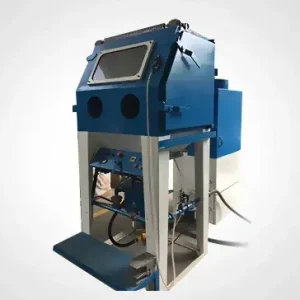The journey of shot blasting machines has been marked by significant advancements, driven by technological innovation and the ever-growing demands of various industries. Leading manufacturers like AeroWheel Surface Finishing, Wheelabrator, Rosler, Goff Inc., and Sinto America have played pivotal roles in this evolution, continuously improving the efficiency, effectiveness, and sustainability of shot blasting technology. Here’s a comprehensive look at the evolution of shot blasting machines, enriched with insights from these top manufacturers.
Early Innovations and Mechanization
Pre-Industrial Era to Early 20th Century
- Manual Abrasion to Mechanized Solutions: Initially, surface preparation was performed manually using natural abrasives like sand and water. The introduction of mechanized solutions during the Industrial Revolution marked a turning point, allowing for more efficient and consistent surface treatment.
- Sandblasting Invention: Benjamin Chew Tilghman’s invention of sandblasting in the late 19th century was revolutionary. This process used compressed air to propel sand at high velocities, effectively cleaning and etching surfaces. Despite its effectiveness, sandblasting had limitations, prompting further innovations.
Introduction of Metallic Abrasives and Blast Wheels
Early to Mid-20th Century
- Shift to Metallic Abrasives: The transition from sand to metallic abrasives such as steel shot and grit improved durability and reusability, reducing costs and enhancing efficiency.
- Development of Blast Wheels: The 1930s saw the invention of centrifugal blast wheels, which propelled abrasive media using centrifugal force. This innovation increased impact energy and efficiency, making shot blasting suitable for heavy-duty applications.
Insights from Manufacturers:
- AeroWheel Surface Finishing: Emphasizes the importance of durable and reusable abrasives in reducing operational costs and improving surface preparation quality.
- Wheelabrator: Highlights the efficiency gains achieved with blast wheels, allowing for faster and more thorough cleaning of large metal surfaces.
Automation and Specialized Machinery
Post-World War II Era
- Automated Systems: The post-war industrial boom led to the development of automated shot blasting machines. Conveyor systems, rotary tables, and tumblers allowed for continuous processing of large quantities of parts, enhancing productivity and consistency.
- Diverse Applications: The introduction of various machine types, such as hanger type, tumble, and table blasters, catered to specific industrial needs, from automotive to aerospace.
Insights from Manufacturers:
- Rosler: Focuses on the versatility of automated systems, which can handle complex parts and high-throughput requirements.
- Goff Inc.: Stresses the importance of robust and reliable machines in maintaining high production standards across different industries.
Technological Advancements and Digital Integration
Late 20th Century to Early 21st Century
How to properly maintain shot blasting equipment for optimal performance.
The different types of shot blasting equipment available and their uses
- Computerization and Control Systems: The incorporation of computer technology brought precision to shot blasting. Machines equipped with computerized controls allowed for accurate regulation of blasting parameters, ensuring consistent results.
- Environmental and Safety Improvements: Innovations in dust collection and filtration systems improved workplace safety and environmental compliance. Enclosed blasting chambers and advanced filtration technologies minimized airborne contaminants.
Insights from Manufacturers:
- Sinto America: Underlines the role of smart technology in enhancing operational efficiency through real-time monitoring and predictive maintenance.
- Wheelabrator: Points out the benefits of advanced dust collection systems in ensuring a safer and cleaner working environment.
Current Trends and Future Prospects
21st Century and Beyond
- Robotics and Automation: The integration of robotics in shot blasting is expected to further increase precision and efficiency. Robotic systems can handle complex geometries and intricate surfaces, providing uniform blasting coverage.
- Smart Technology and IoT: The use of IoT in shot blasting machines enables real-time monitoring, predictive maintenance, and data analysis, leading to improved machine uptime and optimized performance.
- Sustainability: Manufacturers are increasingly adopting sustainable practices, such as recycling abrasive media, using eco-friendly materials, and implementing energy-saving technologies to reduce environmental impact.
Insights from Manufacturers:
- AeroWheel Surface Finishing: Emphasizes the need for sustainable practices and energy-efficient designs in modern shot blasting machines.
- Rosler: Highlights the importance of smart technology and IoT in achieving higher efficiency and reliability in shot blasting operations.
Conclusion
The evolution of shot blasting machines is a testament to the relentless pursuit of efficiency, precision, and sustainability by leading manufacturers. From manual abrasive techniques to sophisticated, automated systems, the advancements in shot blasting technology have significantly enhanced surface preparation processes across various industries. Insights from top manufacturers like AeroWheel Surface Finishing, Wheelabrator, Rosler, Goff Inc., and Sinto America underscore the critical role of innovation in driving the industry forward. As technology continues to advance, the future of shot blasting promises even greater efficiency, precision, and sustainability, meeting the ever-evolving demands of modern manufacturing and surface treatment applications.









